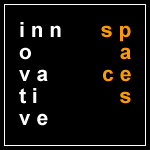|
 |
Innovative Spaces
 Traditionally, when business has wanted to be more innovative and more productive they spend money on equipment and technology. This belies the fact that innovation is a social phenomenon. All ideas start with an individual and they live or die when they are shared with other people. Technology can only be a support player in this process. The ‘Innovative Spaces’ program deals with innovation as a people issue and looks at what your teams need to be more creative and innovative. Traditionally, when business has wanted to be more innovative and more productive they spend money on equipment and technology. This belies the fact that innovation is a social phenomenon. All ideas start with an individual and they live or die when they are shared with other people. Technology can only be a support player in this process. The ‘Innovative Spaces’ program deals with innovation as a people issue and looks at what your teams need to be more creative and innovative.
Key questions include:
 How can I trust the group with my idea? How can I trust the group with my idea?
 What is conversational action? What is conversational action?
 What type of conversation is best suited to being creative? What type of conversation is best suited to being creative?
 What actions in my conversations can make us more creative (and more productive)? What actions in my conversations can make us more creative (and more productive)?
 Does the mood of our team support being creative or not? Does the mood of our team support being creative or not?
 How does our listening effect being creative? How does our listening effect being creative?
This program is offered as a half day, single day or two day workshop. This program may also be supported by individual coaching to support participants in being creative and innovative in the workplace.
The format of this workshop is a series of experiential activities and open discussions.
This program is recommended to:
 Create a public conversation of the importance of innovation and creativity for business success with your team Create a public conversation of the importance of innovation and creativity for business success with your team
 Increase productivity and creativity through enhancing workplace relationships Increase productivity and creativity through enhancing workplace relationships
 Provide a safe environment for individuals to offer their ideas to other team members Provide a safe environment for individuals to offer their ideas to other team members
 Enhance team morale and create useful emotional spaces Enhance team morale and create useful emotional spaces
Program Result
Participants will work together more effectively and be more creative and innovative in the workplace.
For more information email mail@designprobe.com
Innovation Articles
Are you an 'Information Worker' or an 'Innovation Worker'?
In the 1960's Peter Drucker coined the term 'Information Worker' to describe the shift from physical to mental work. Today managing information is insufficient, today we need the 'Innovation Worker'.
The Levels of Innovation
In this article we explore the differences between design and invention through the example of John Harrison and his invention of the chronometer and we propose the model: ‘The Levels of Innovation’.
Three Futures
In this article we discuss three possible ways to invent your future.
Next: The Idea Wall
|
 |
| |
|
|

|
|

![]()
